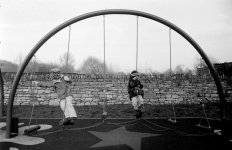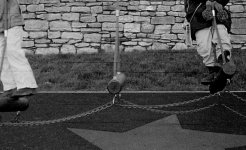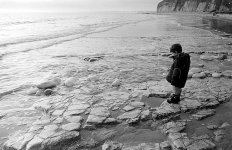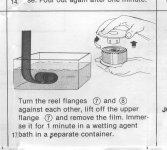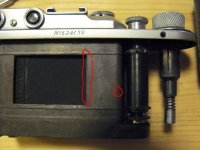arowe
Member
When I scanned the first film (HP5+) through my zorki-1, I noticed some scratches. - I now tried another film (FP4+) primarily to try the Orion-15, and this seems to have worse scratches - The first shot is the complete frame showing the worst scratches, and the second shot is of a crop of a small area showing them in detail. The third shot doesn't seem to show scratches and is from earlier in the film.
There are a couple of things I notice. - Firstly, they are not evident on all frames and 'seem' to be worse towards the end of the film. Secondly, they only seem to affect the centre of the negatives. - They are pretty much in the same place on each frame. - What seems odd is that they are not necessarily 'straight' - I'd expect them to be pretty straight ...?
Any ideas - I don't think it's my processing and the scanner holds the negs in a tray, so they are not being introduced there. - The scratches seem to be on the emulsion side though it's very hard to tell.
Many thanks.
Alan.
There are a couple of things I notice. - Firstly, they are not evident on all frames and 'seem' to be worse towards the end of the film. Secondly, they only seem to affect the centre of the negatives. - They are pretty much in the same place on each frame. - What seems odd is that they are not necessarily 'straight' - I'd expect them to be pretty straight ...?
Any ideas - I don't think it's my processing and the scanner holds the negs in a tray, so they are not being introduced there. - The scratches seem to be on the emulsion side though it's very hard to tell.
Many thanks.
Alan.


